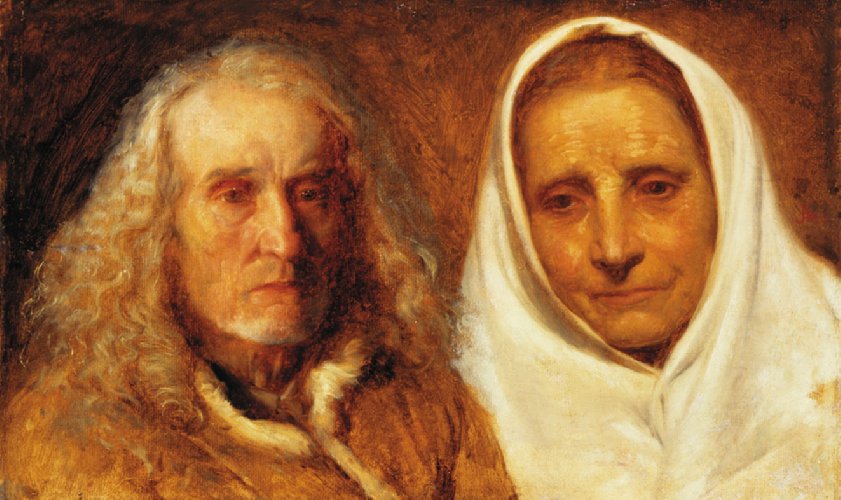Description:
Alexander Kotsis (1836-1877) attended the School of Fine Arts in Krakow between 1850 and 1860. The scholarships he received allowed him to make numerous trips abroad, including to Vienna, where he continued his studies at the Academy in the Historical Painting Department. He often returned to the Polish mountains, which became one of his creative inspirations. He exhibited his work both in Poland and in Europe for years. He painted landscapes, inhabitants and everyday life. He was called “the lover of the Tatra Mountains and the highlands”. The artist created in the style of romantic realism.
Description of the painting:
Edward Aleksander Raczyński was associated with Krakow, while his wife, Róża, spent many years in Zakopane due to the illness of the children from her first marriage. The fresh mountain air was meant to help with their treatment. The villa occupied by her, called Adasiówka after her son Adam Krasiński, was the center of cultural life and a meeting place for many famous figures, such as Aleksander Fredro, Henryk Sienkiewicz, Wojciech Kossak, and Ignacy Jan Paderewski. Róża also hosted the famous Podhale storyteller Jan Krzeptowski, known as Sabała. His portrait by Alexander Kotsis is located in the hall of the Rogalińska Gallery.
Accompanying Sabała was an old highlander woman, possibly his wife Teresa from Wilczaków. Sabała was a symbol of highland culture, a figure of Podhale. The man was born in 1809 in Kościelisko. In his youth, he had episodes of hunting and even robbery. He took part in the Chochołowska Uprising against the Austrian authorities, after which he was imprisoned. After this period, he changed his lifestyle, took up storytelling and music. For years he accompanied various figures on mountain expeditions, being a guide, but also enlivening the journey with stories and singing. He became friends with Tytus Chałubiński and Stanisław Witkiewicz, who called him “Homer of the Tatras” and made him the godfather of his son – Witkacy. Sabała could not write or read, but his stories were popularized by, among others, Stanisław Witkiewicz and Henryk Sienkiewicz.
The portrait of Kotsis is kept in a range of colors narrowed down to golden browns and whites. The figures fill almost the entire picture plane. The background is monochromatic, maintained in browns, undistracted, created by irregular brushstrokes, with visible hair texture. The figures seem to be wrapped up in it. The right side of the picture plane is occupied by the figure of an older mountain woman. In a white scarf, from which her head is shown en face (straight on). Her face is bathed in gold shades. Wrinkles are visible on it, emphasized by the light falling on her face. Her gaze is directed towards the lower left corner of the picture plane. The left part of the work is occupied by Sabała. He stands out in front of the woman. He is shown in three quarters. He seems to be a bit smaller, dressed in a fur coat. His head surrounded by long, illuminated locks is directed to the right, the man is gazing into the distance. Both figures have distinct features emphasizing their age and life experience. Their clothes are characteristic of the region they come from.
A realistic approach to the mountain people allows for the recreation not only of their physical but also of their psychological portrait. The characters are individualized as if the picture were composed of two independent portraits. Knowing Sabała’s life story, it seems as if the work reflects the relationship between the spouses. The image exudes peace, looking at the portrayed faces the viewer can get the impression as if they accepted each other fully. Their gaze is directed in different directions, however, one can find a place where they intersect, connecting them together.


